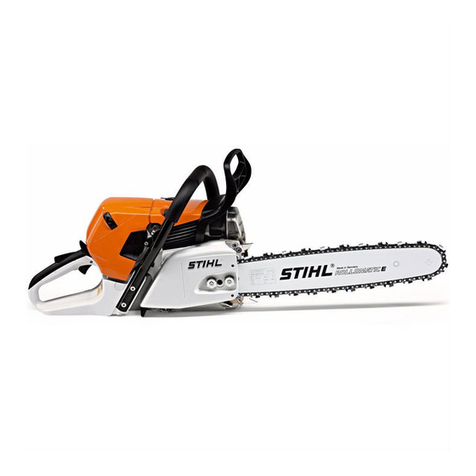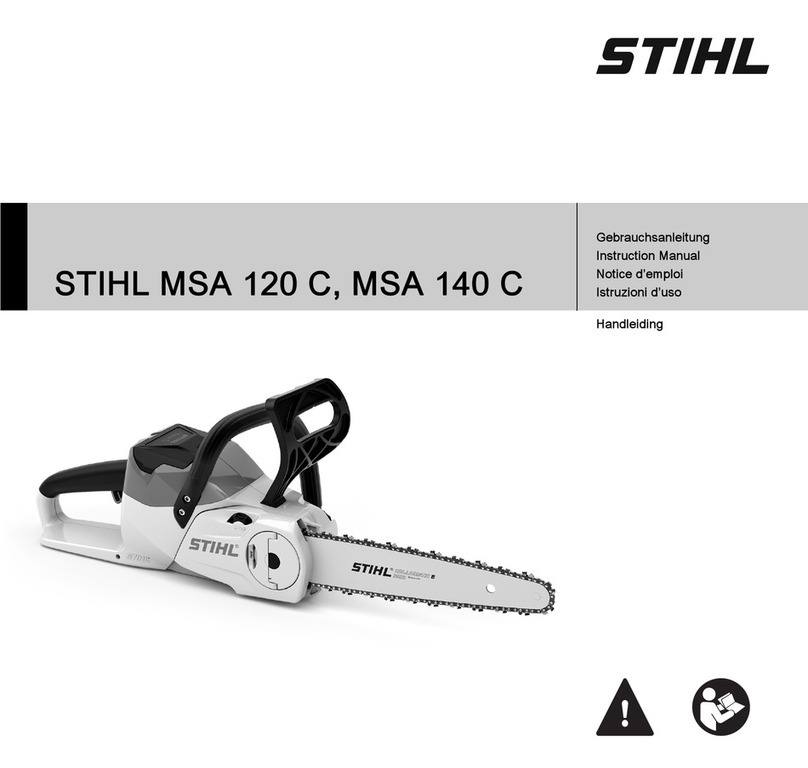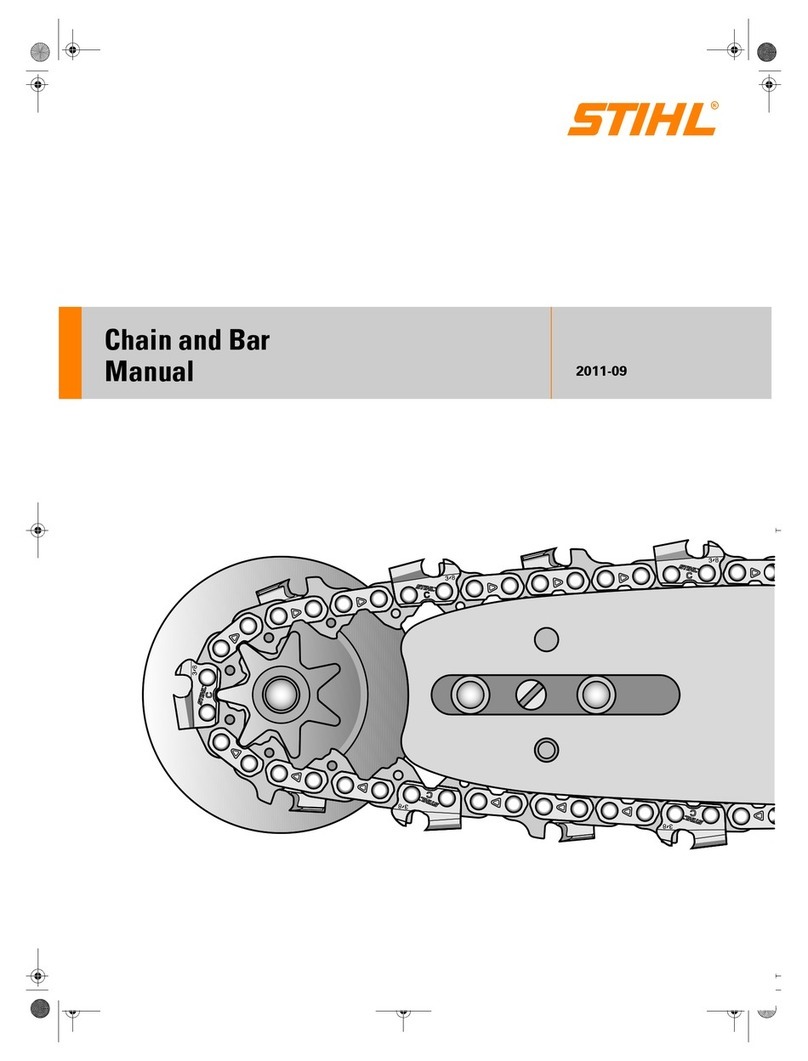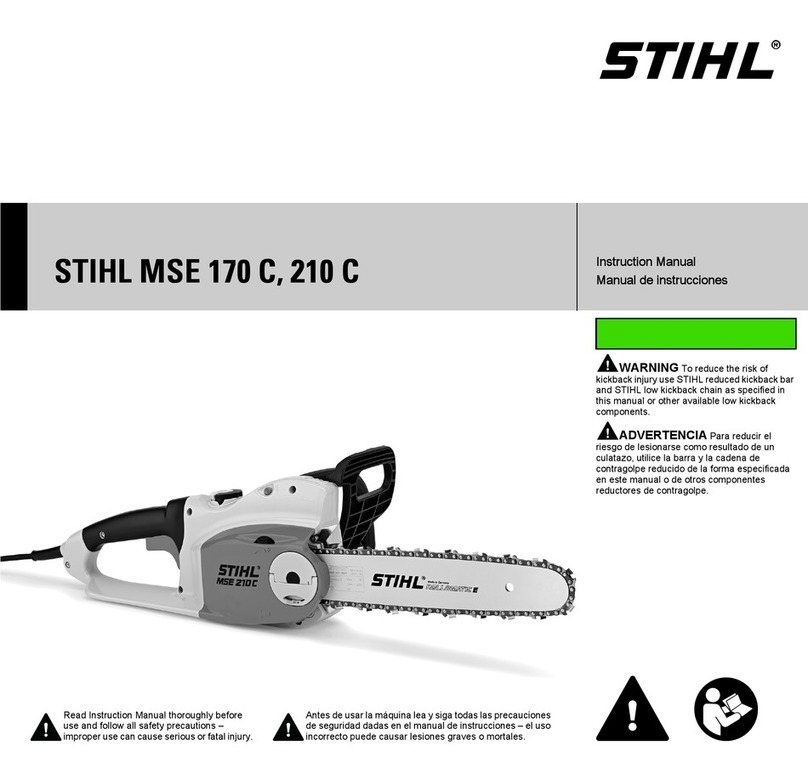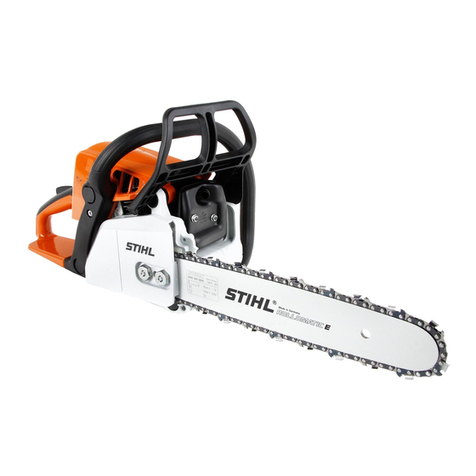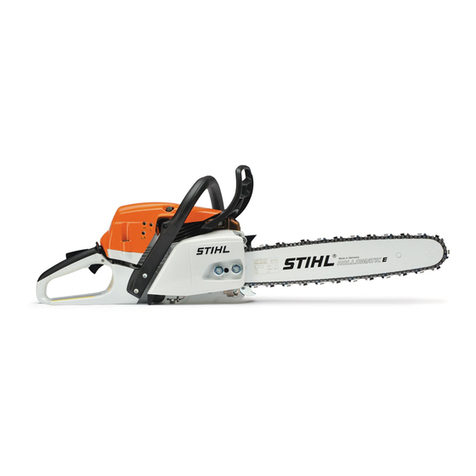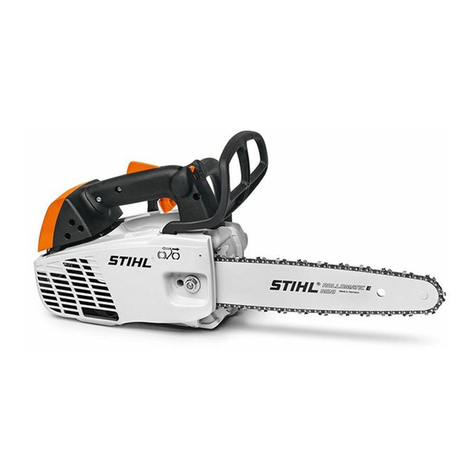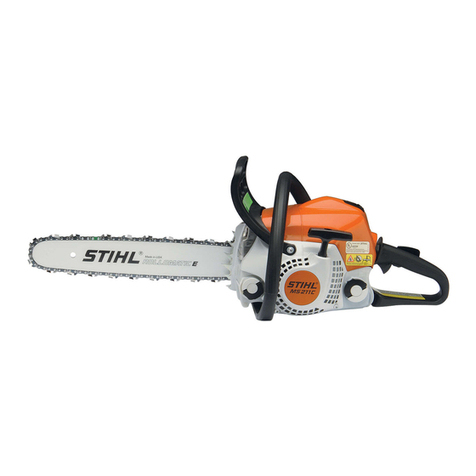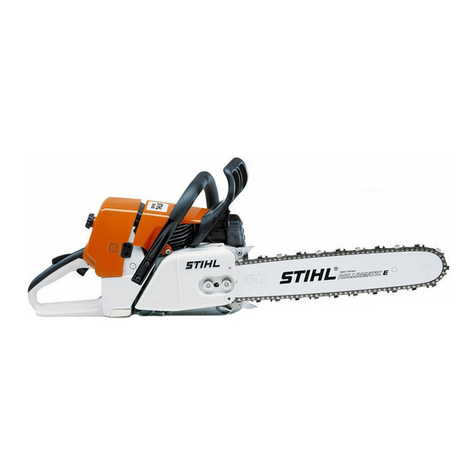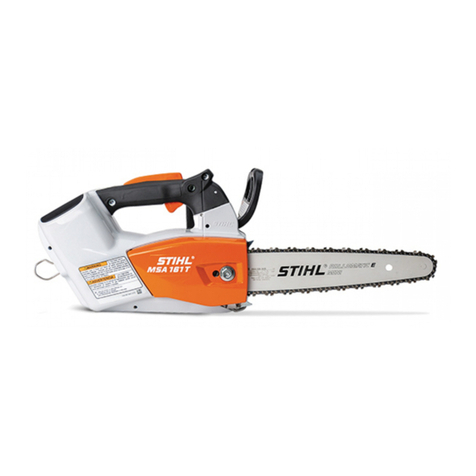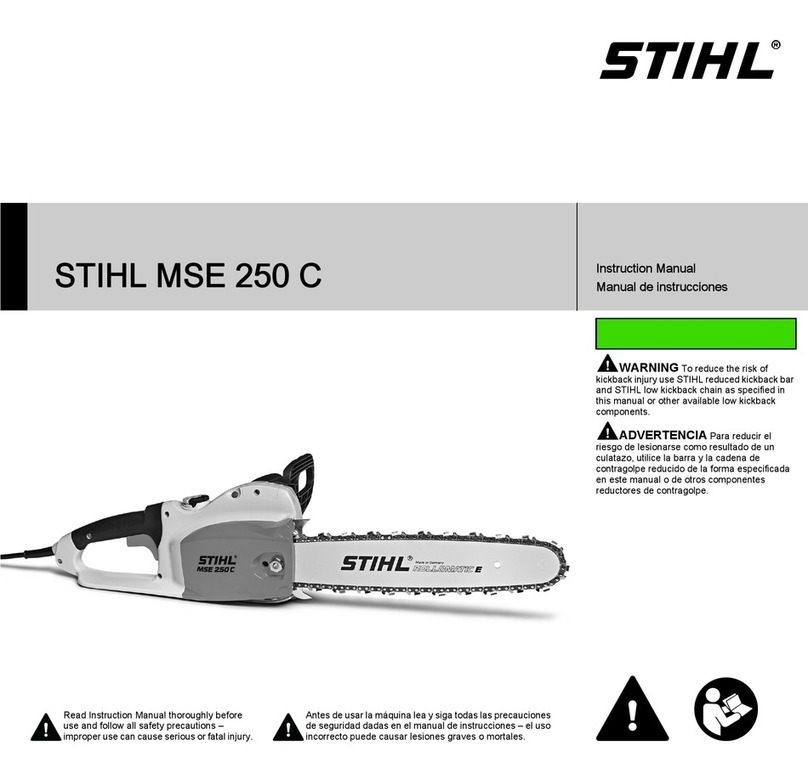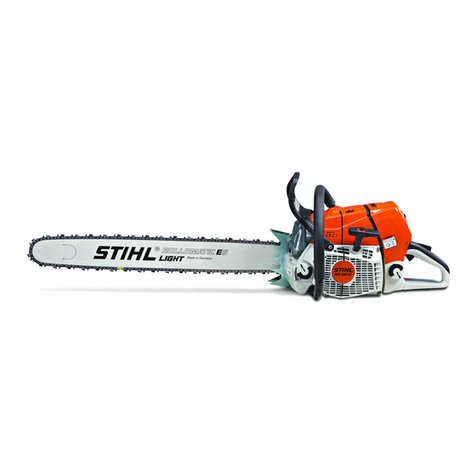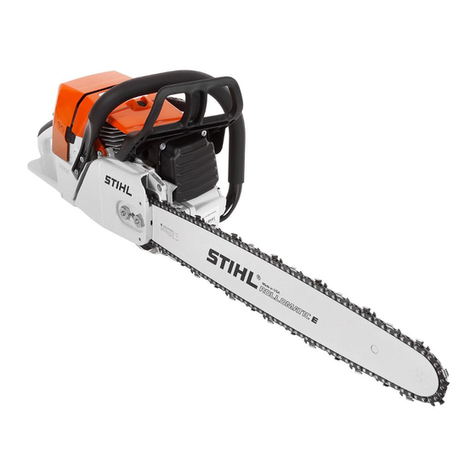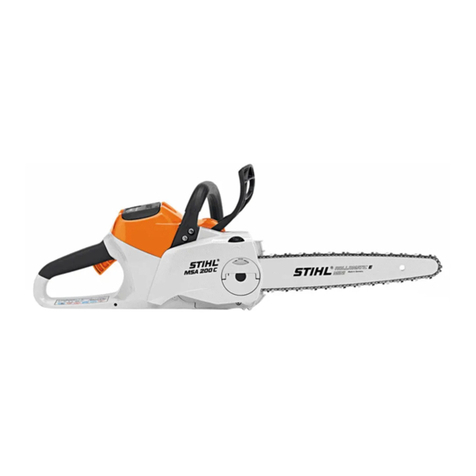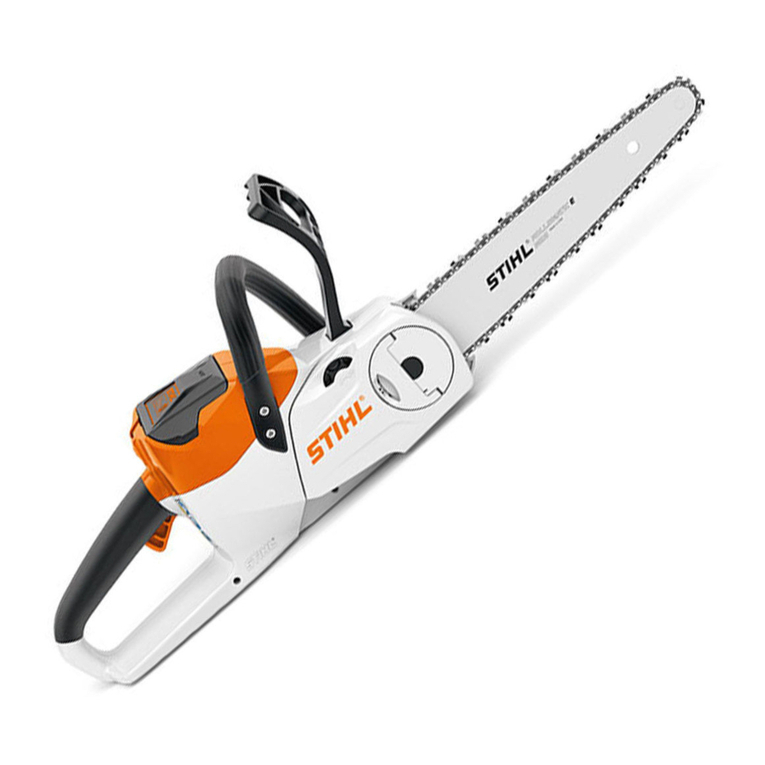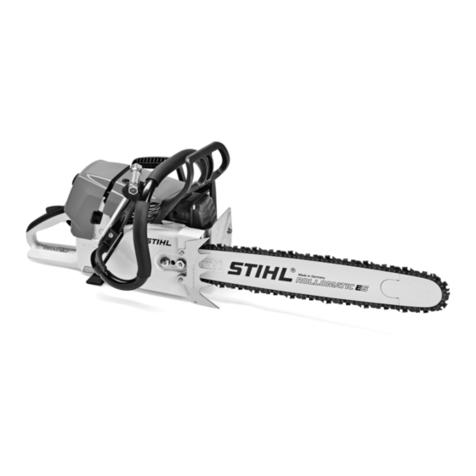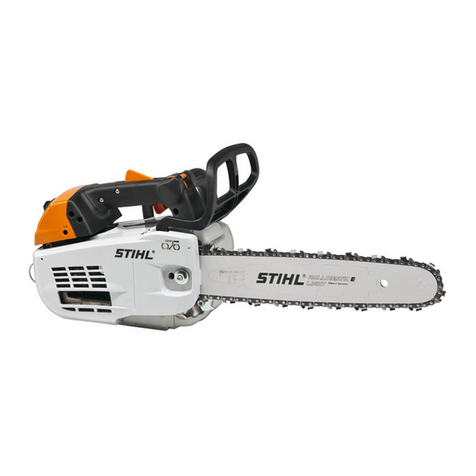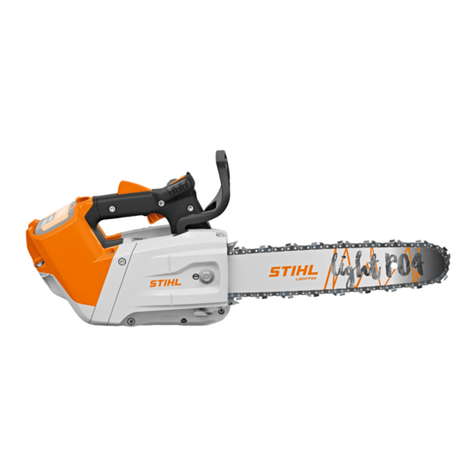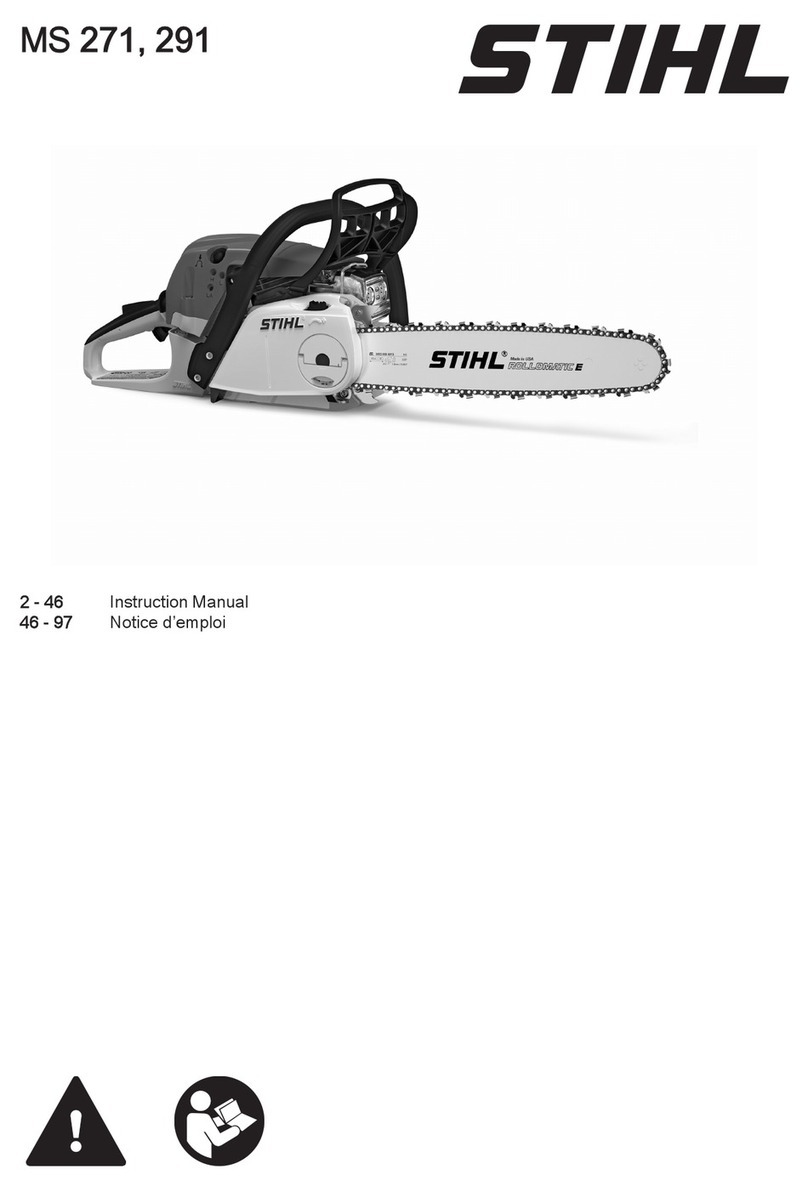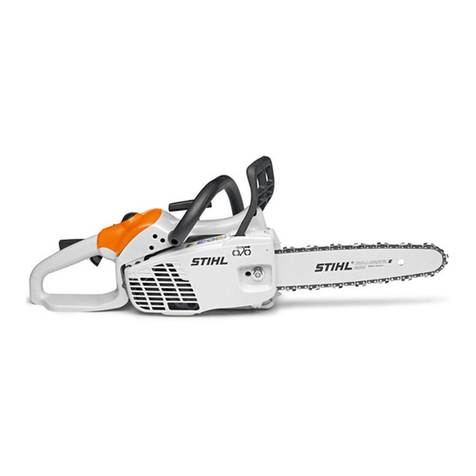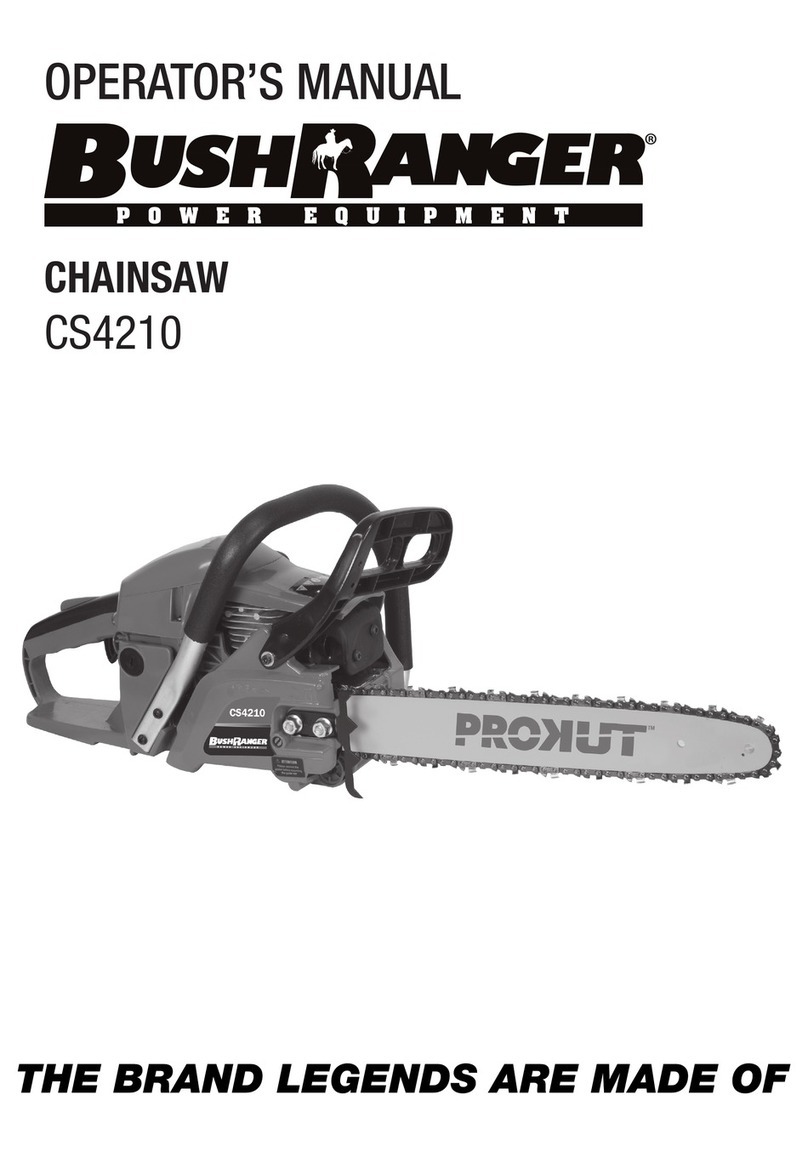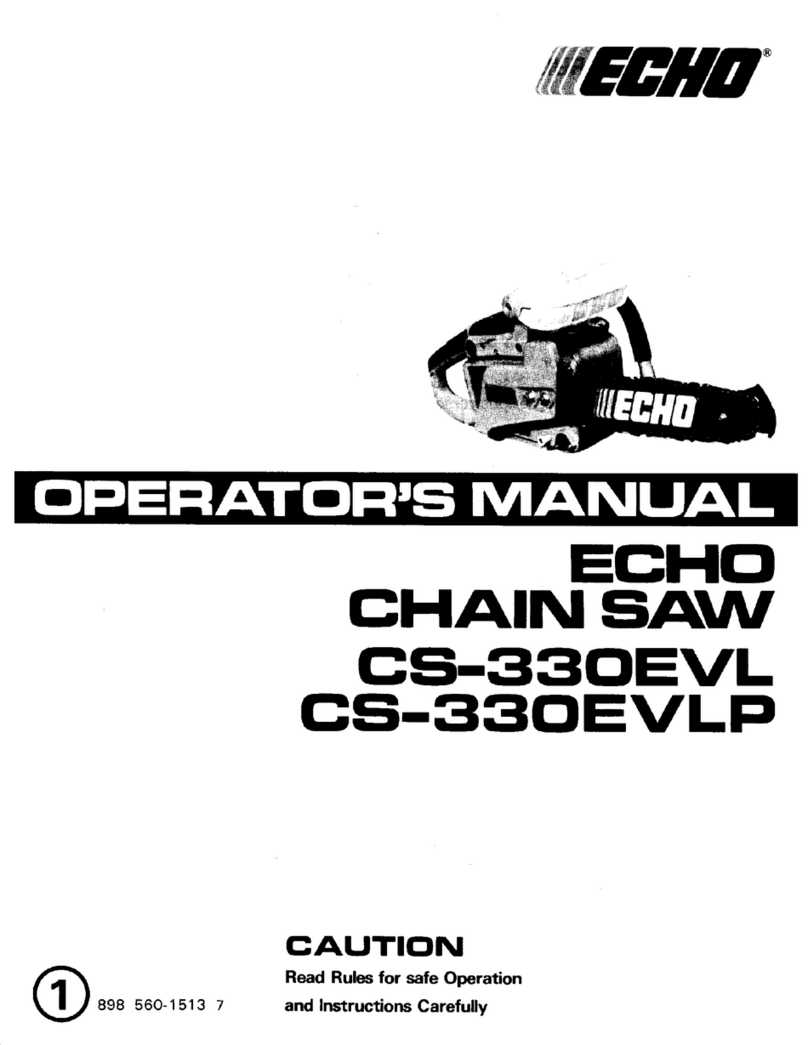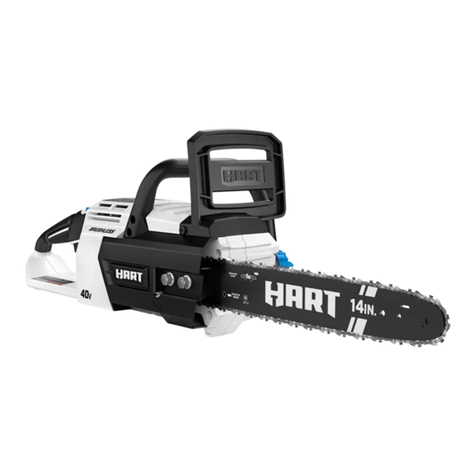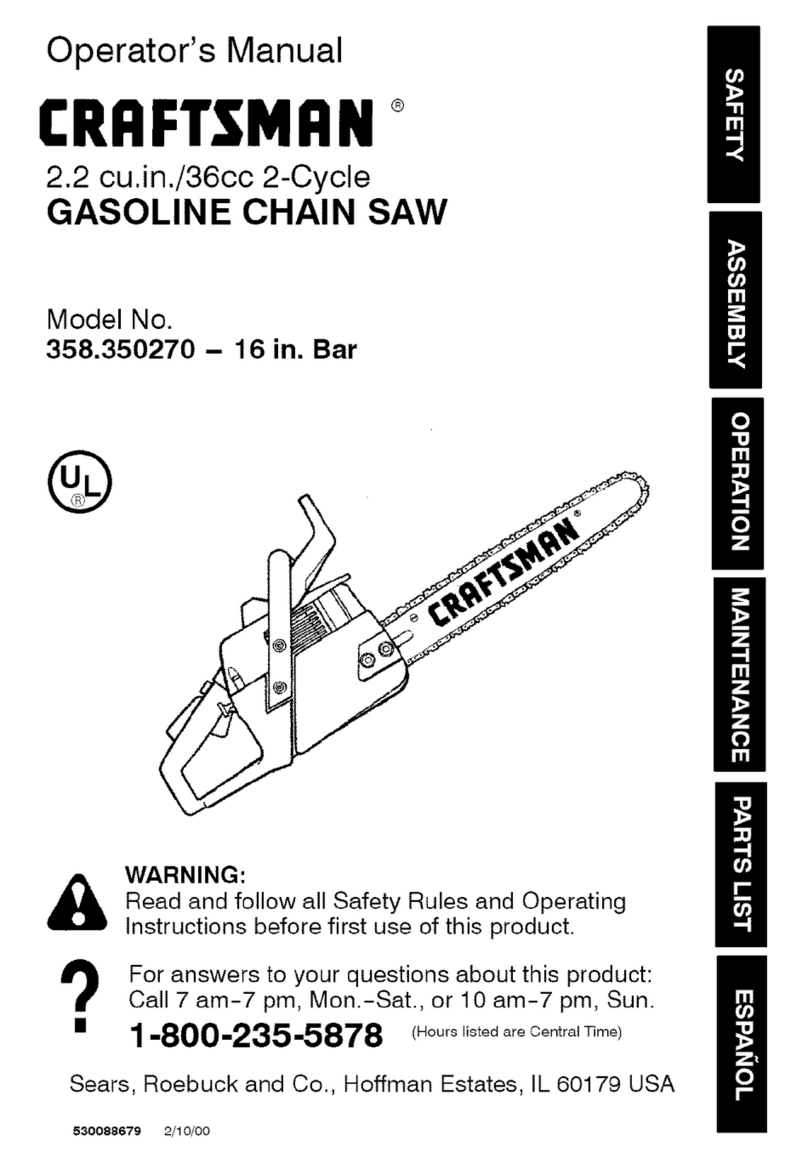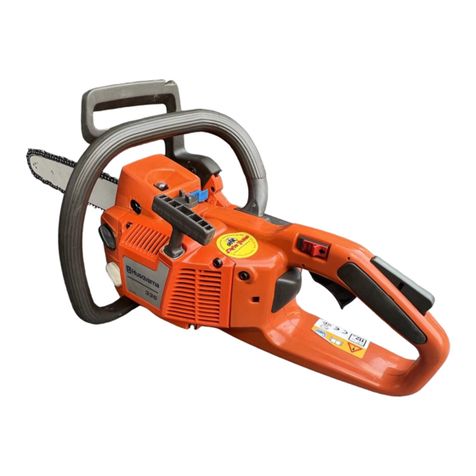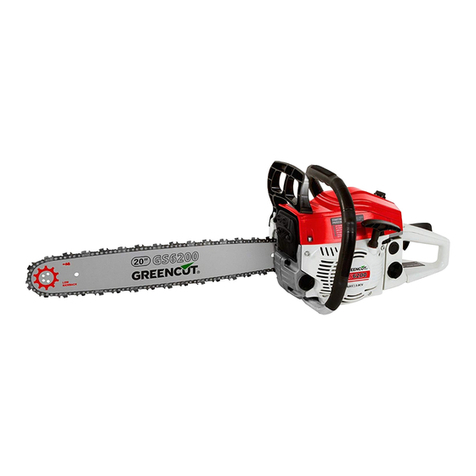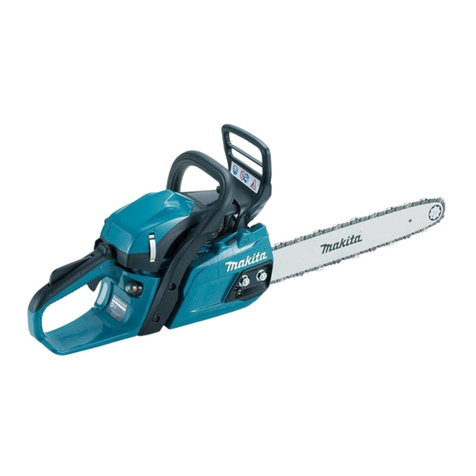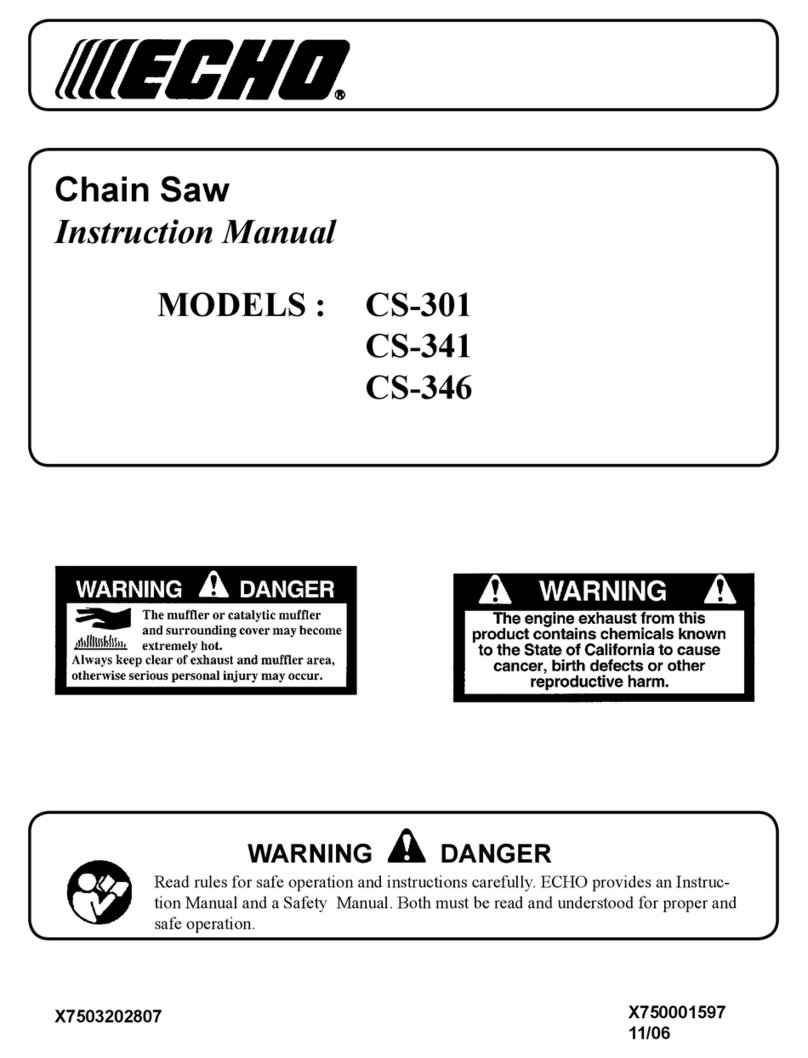
–Switch off the motor, wait for the chain to
come to a standstill, disconnect the plug from
the wall outlet.
–Check condition and proper mounting.
–Check sharpness.
Do not touch the chain while the chainsaw is
switched on. If the chain becomes jammed by an
obstacle, switch off the motor immediately and
disconnect the plug from the power supply
before attempting to free the obstruction – risk of
injury.
Before leaving your saw, switch it off, move the
hand guard to ƒ and disconnect the plug from
the wall outlet to reduce the risk of the motor
starting unintentionally.
To replace the saw chain, switch off the chain‐
saw, move hand guard to ƒ and disconnect the
plug from the wall outlet. This avoids the risk of
injury from the motor starting unintentionally.
Your power tool is equipped with a system
designed to quickly stop the saw chain – it
comes to an immediate standstill as soon as you
release the trigger switch – see "Coasting
Brake".
Check this function at regular short intervals. Do
not operate your chainsaw if the chain continues
to run after you release the trigger switch – see
"Coasting Brake" – risk of injury. Contact your
servicing dealer.
Never operate your saw without proper chain
lubrication – check oil level regularly during oper‐
ation. Stop work immediately if the oil level is too
low and refill the oil tank – see also chapters on
"Filling Chain Oil Tank" and "Checking Chain
Lubrication".
If your saw is subjected to unusually high loads
for which it was not designed (e.g. heavy impact
or a fall), always check that it is in good condition
before continuing work – see also "Before Start‐
ing Work". Make sure the safety devices are
working properly. Do not continue operating your
saw if it is damaged. In case of doubt, consult
your servicing dealer.
2.11 After Finishing Work
Switch off the saw, move the hand guard to ƒ,
disconnect the plug from the wall outlet and fit
the chain scabbard.
2.12 Storing
When the chainsaw is not in use, store it so that
it does not endanger others. Secure it against
unauthorized use.
Store your chainsaw in a dry location with the
hand guard on ƒ and the plug disconnected
from the wall outlet.
2.13 Vibrations
Prolonged use of the power tool may result in
vibration-induced circulation problems in the
hands (whitefinger disease).
No general recommendation can be given for the
length of usage because it depends on several
factors.
The period of usage is prolonged by:
–Hand protection (wearing warm gloves)
–Work breaks
The period of usage is shortened by:
–Any personal tendency to suffer from poor cir‐
culation (symptoms: frequently cold fingers,
tingling sensations).
–Low outside temperatures.
–The force with which the handles are held (a
tight grip restricts circulation).
Continual and regular users should monitor
closely the condition of their hands and fingers. If
any of the above symptoms appear (e.g. tingling
sensation in fingers), seek medical advice.
2.14 Maintenance and Repairs
Before carrying out any repairs, cleaning or
maintenance work or work on the cutting attach‐
ment, always switch off the chainsaw, move the
hand guard to ƒ and disconnect the plug from
the wall outlet. This avoids the risk of injury from
the chain starting unintentionally.
Service the chainsaw regularly. Do not attempt
any maintenance or repair work not described in
the instruction manual. Have all other work per‐
formed by a servicing dealer.
STIHL recommends that you have servicing and
repair work carried out exclusively by an author‐
ized STIHL servicing dealer. STIHL dealers are
regularly given the opportunity to attend training
courses and are supplied with the necessary
technical information.
Only use high-quality replacement parts in order
to avoid the risk of accidents and damage to the
saw. If you have any questions in this respect,
consult a servicing dealer.
English 2 Safety Precautions
6 0458-756-0121-B
